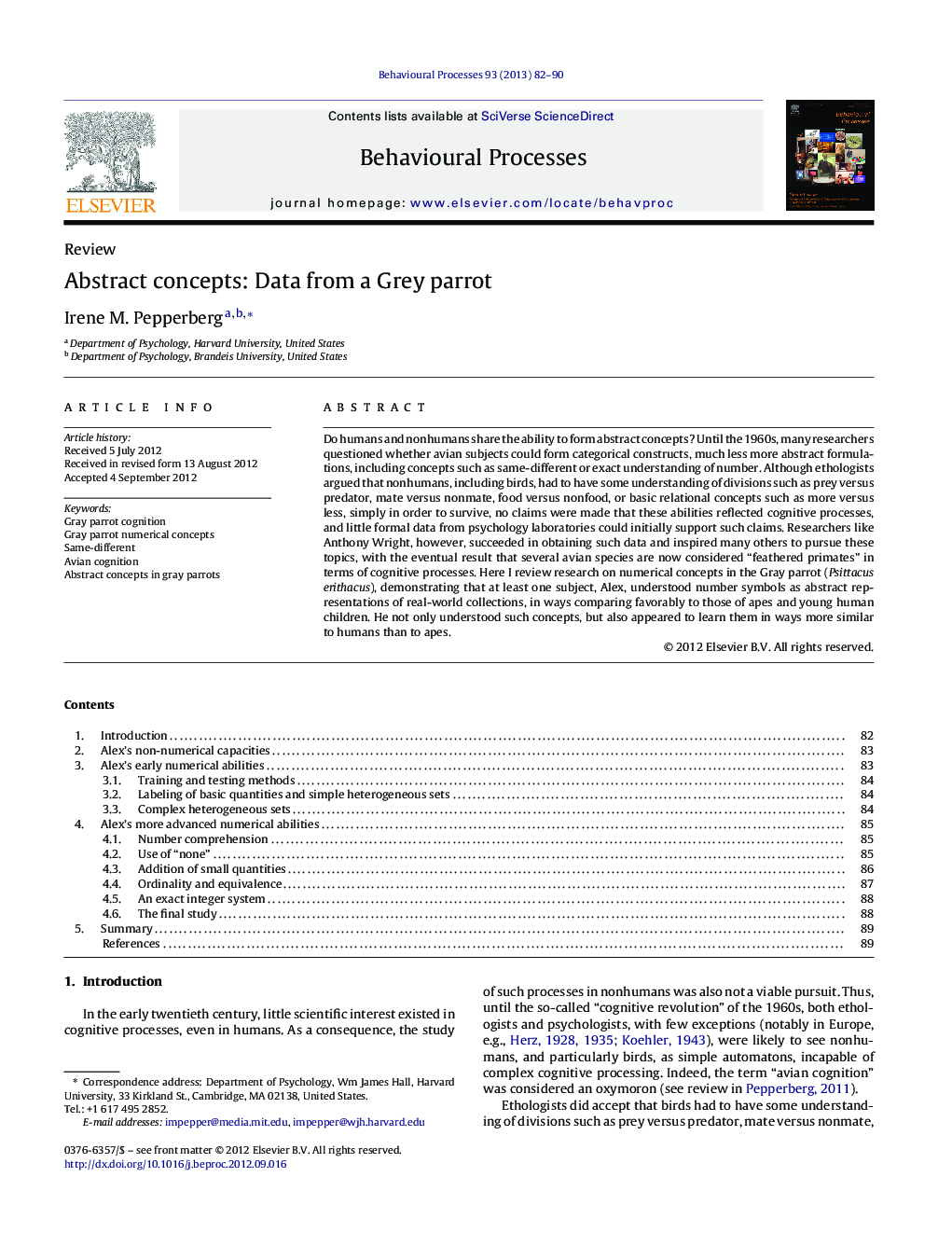| Article ID | Journal | Published Year | Pages | File Type |
|---|---|---|---|---|
| 2426871 | Behavioural Processes | 2013 | 9 Pages |
Do humans and nonhumans share the ability to form abstract concepts? Until the 1960s, many researchers questioned whether avian subjects could form categorical constructs, much less more abstract formulations, including concepts such as same-different or exact understanding of number. Although ethologists argued that nonhumans, including birds, had to have some understanding of divisions such as prey versus predator, mate versus nonmate, food versus nonfood, or basic relational concepts such as more versus less, simply in order to survive, no claims were made that these abilities reflected cognitive processes, and little formal data from psychology laboratories could initially support such claims. Researchers like Anthony Wright, however, succeeded in obtaining such data and inspired many others to pursue these topics, with the eventual result that several avian species are now considered “feathered primates” in terms of cognitive processes. Here I review research on numerical concepts in the Gray parrot (Psittacus erithacus), demonstrating that at least one subject, Alex, understood number symbols as abstract representations of real-world collections, in ways comparing favorably to those of apes and young human children. He not only understood such concepts, but also appeared to learn them in ways more similar to humans than to apes.
► A Gray parrot, Alex, was trained to label colors, shapes, objects. ► He then learned to label vocally sets of 1–6 objects, including heterogeneous sets. ► He learned to label corresponding Arabic numerals, then induced their cardinality. ► He induced the ordinality of those numerals from their cardinal values. ► He induced the cardinality of new Arabic numerals from their ordinality, i.e., the successor function.
